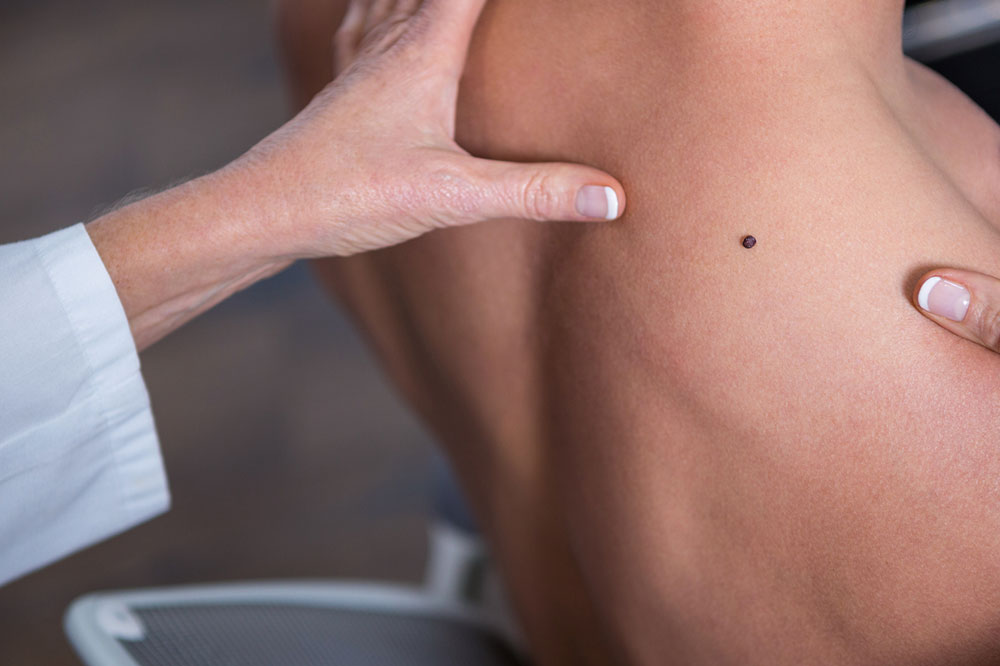
A Comprehensive Guide to Melanoma
More than 100,000 people are estimated to be diagnosed with melanoma in the United States in 2020 alone. And about 6000-7000 of these people are expected to succumb to this type of skin cancer. More men are affected by melanoma than women. But statistics reveal that it is men over the age of 60 who are generally susceptible to melanoma.
However, women can be affected at a much younger age too. Here the symptoms, treatment options, and preventive measures of melanoma are mentioned in brief for you.
1. Symptoms of melanoma
The appearance of a new atypical, anomalous mole or changes happening in an existing mole is a cause for concern.
The easiest way to remember the early symptoms of melanoma is in the first five alphabets of the English language, A, B, C, D, and E. Look out for the following:
- Asymmetry
Asymmetrical moles that appear vastly different in both parts when divided into two - Border
Moles with ragged borders or scraggy edges - Color
Color changing moles that are not entirely brown, tan, or black. Malignant moles tend to be unevenly colored with differing black or brown shades and sometimes even appear white, pink, blue, or red - Diameter
When the mole’s diameter is larger than 1/4th of an inch, and it keeps growing in size, it is abnormal - Evolving
Observe to see if the mole is growing: changes its shape, color, or size over time
2. Treatment of melanoma
The early detection of melanoma skin cancer makes this disease more curable. Depending on the stage of cancer at the time of diagnosis, you can follow multiple treatment approaches. Some of them are as follows:
- Surgery
The most preferred treatment for early-stage melanoma is surgery. Here, a minor operation helps remove the tumors and part of the surrounding healthy tissues. In rare cases, when the melanoma is deep-set, or if it is diagnosed later, especially in the fingernails or toenails, then amputation is performed. - Immunotherapy
The focus is on strengthening the body’s immune system to fight against melanoma cancer cells. In immunotherapy, chemicals produced naturally by the body, or those created in a lab, are used to improve or restore the immune system’s efficiency to fight skin cancer. - Targeted therapy
Targeted therapy aims to stop the growth and spread of cancer cells. Specific genes, proteins, or tissues are explicitly targeted in this treatment to fight melanoma and limit the damage caused to healthy cells. - Chemotherapy
Certain drugs are used in chemotherapy to stop the growth and division of cancer cells. Chemotherapy uses either a single drug or a combination of drugs to treat melanoma. - Radiation therapy
External beam radiation therapy uses high-energy x-rays or other particles to destroy cancer cells. Radiation is also used for some melanoma cancer patients to avoid the recurrence of cancer after surgery.
3. Prevention of melanoma
It is not entirely possible to prevent any disease, and melanoma is no exception. You can control numerous risk factors, while some, like family history and genetics, cannot be changed. However, lowering the risk of this cancer is possible to an extent. Listed below are a few ways to do it.
- Reduce exposure of the skin to UV radiation from the sun. This reduction in susceptibility is the primary step in preventing melanoma.
- Limit your exposure to the sun during peak hours when the sun is brightest and avoid sunburn, especially at a young age.
- Wear protective layered clothing, sunglasses, and wide-brimmed hats to cover the eyes, face, head, neck, and back. These accessories help keep the harmful effects of UV radiation away.
- Avoid sunbathing and other outdoor activities in the harsh sun for long durations, especially for young children.
- Avoid using artificial tanning devices like sunlamps and tanning beds.



